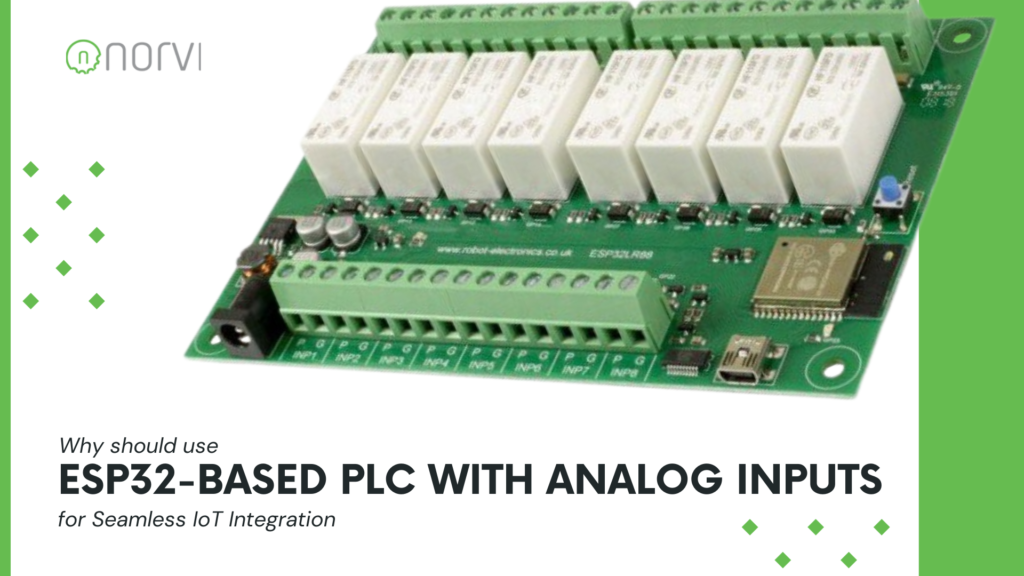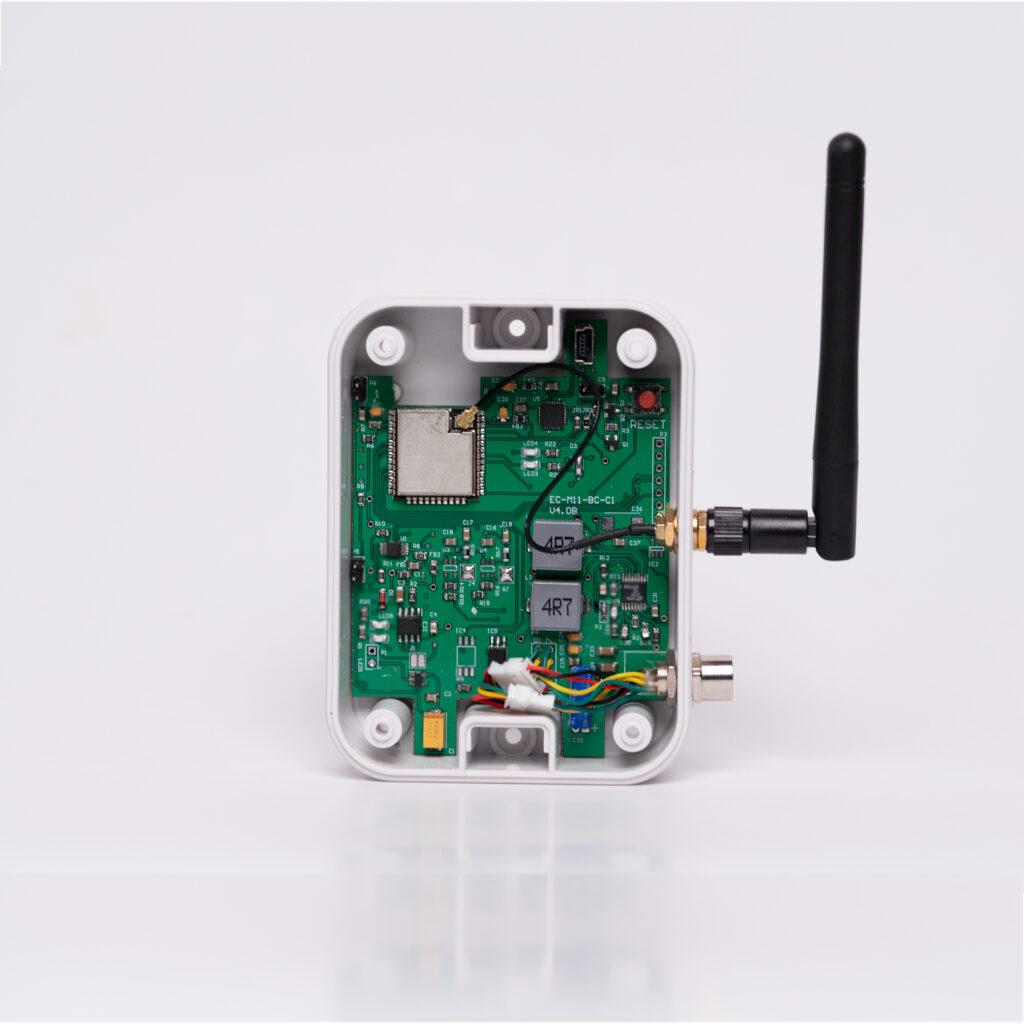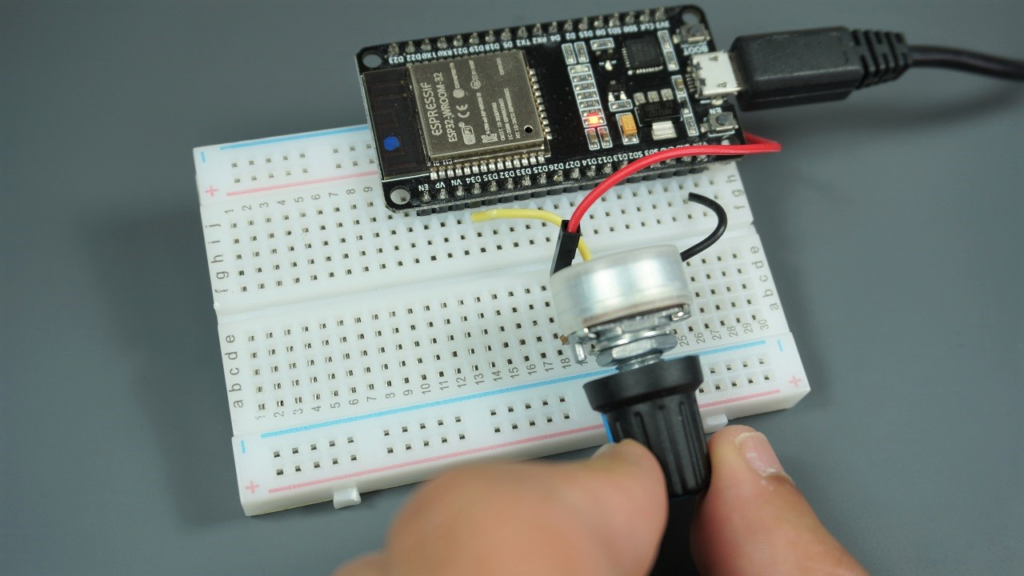
Wondering how our ESP32-based PLC with Analog Inputs stand out? Delve into the crucial features, precision capabilities, and versatility of analog inputs, crucial for precise real-world data acquisition and control across diverse industries. NORVI’s tailored range of 0-10V and 4-20mA Analog Inputs presents customized solutions for industrial requirements.
What are Analog Inputs?
Analog inputs refer to the interfaces or ports on a device, such as a microcontroller, PLC (Programmable Logic Controller), or sensor, that are designed to accept analog signals. These inputs are crucial for acquiring and processing continuous real-world data that varies in amplitude or intensity over time.
Analog inputs typically allow the connection of sensors or devices that generate analog signals, such as temperature sensors, pressure transducers, potentiometers, strain gauges, and many others. These sensors produce signals that represent physical quantities like temperature, pressure, voltage, light intensity, etc., in analog form, which means they provide a continuous range of values.
Devices equipped with analog inputs use analog-to-digital converters (ADCs) to convert the incoming analog signals into digital form, which can be processed, analyzed, stored, or used by digital systems like microcontrollers or computers. The ADCs sample the analog signal at discrete intervals and assign digital values to represent the amplitude of the analog signal at those points in time.
Analog inputs are essential in various fields, especially in industrial automation, robotics, data acquisition systems, and scientific instrumentation, where precise measurement and control of analog data are critical for operations and analysis. The quality and accuracy of the analog inputs play a significant role in the overall performance and reliability of the system.
Features of ESP32-based PLC with Analog Inputs?
ESP32-based PLC with Analog Inputs has main features as below,
- High-resolution analog-to-digital conversion
- Voltage input range
- Current input range
- Differential input capability
- Sampling rate
- Noise filtering
- Programmable gain amplification
- Multiplexed input channels
- Overvoltage protection
- Calibration options
- Signal conditioning
- Compatibility with various sensors
- Low-power consumption
- Real-time data acquisition
- Configurable input impedance

The Precision of Analog inputs
The precision of ESP32-based PLC with Analog Inputs refers to their ability to accurately measure and convert analog signals into digital values. The ESP32 microcontroller typically has a 12-bit ADC (Analog-to-Digital Converter) for analog input.
The 12-bit ADC resolution means that it can convert an analog input voltage into a digital value between 0 and 4095 (2^12 – 1), providing 4096 discrete steps. This resolution determines the granularity or level of detail in the conversion process. Higher resolution allows for more precise measurements, as the ADC can distinguish smaller changes in the input voltage.
The precision of the ESP32-based PLC with Analog Inputs can be affected by various factors, including:
- Voltage reference: The accuracy and stability of the reference voltage used by the ADC can impact the overall precision of analog-to-digital conversion.
- Noise and interference: Electrical noise or interference in the system can introduce errors in the analog readings, affecting the accuracy and precision of the measurements.
- Signal conditioning: Proper signal conditioning circuits and techniques can enhance the accuracy and reduce noise in analog measurements.
- Calibration: Calibration procedures can be implemented to improve the accuracy and correct any inherent inaccuracies in the ADC readings.

While the ESP32’s ADC provides reasonable precision for many applications, if higher accuracy or precision is required, external analog front-end components or specialized ADCs with higher resolutions and better characteristics can be used in conjunction with the ESP32 to achieve more accurate analog measurements. Additionally, careful design considerations and noise reduction techniques can also improve the overall precision of analog inputs in ESP32-based systems.
Versatility of an ESP32-based PLC with Analog Inputs
The versatility of an ESP32-based PLC with Analog Inputs lies in its ability to offer a wide range of functionalities and applications across various industries. Here are several aspects that highlight the versatility of an ESP32-based PLC with analog inputs:
- Flexible Analog Input Support: ESP32-based PLCs typically come equipped with multiple analog input channels, allowing integration with various analog sensors measuring parameters like temperature, pressure, humidity, voltage, current, etc. This flexibility enables monitoring and control of diverse industrial processes.
- Higher Resolution: ESP32-based PLC offers higher resolution analog inputs with ADS1115 16bit ADC.
- Real-time Monitoring and Control: With its capability for real-time data acquisition and processing, an ESP32-based PLC can continuously monitor analog input signals, providing timely control actions based on the analyzed data.
- Wireless Connectivity: Many ESP32-based PLCs come with built-in Wi-Fi or Bluetooth connectivity, enabling remote monitoring, control, and data transmission to cloud platforms or mobile devices. This wireless capability enhances the PLC’s adaptability to IoT (Internet of Things) applications.
- Cost-Effective Solution: ESP32-based PLCs often offer a cost-effective alternative compared to traditional PLCs, making them suitable for smaller-scale industrial applications or projects with budget constraints.
- Scalability and Expansion: These PLCs are often designed with expandability in mind, allowing the addition of extra modules or peripherals to extend functionality, such as adding more analog inputs, digital I/Os, communication interfaces, etc.
- Cross-Industry Applicability: The versatility of an ESP32-based PLC with analog inputs makes it suitable for a wide range of industries including manufacturing, agriculture, HVAC (heating, ventilation, and air conditioning), automation, monitoring systems, and more.
In essence, the ESP32-based PLC’s versatility lies in its adaptability to diverse applications, its programmability, connectivity options, and the ability to handle analog signals while offering a cost-effective solution for various industrial automation needs. Threfore, it shows that how vital ESP32-based PLC with Analog Inputs for seamless IoT intergration and Automation projects.
NORVI has ESP32-based PLC with Analog Inputs which offers two ranges of Analog Inputs as 0-10V Analog Inputs and 4-20mA Analog Inputs, refer to our product range.
#AnalogInputs #ESP32PLC ESP32PLCwithAnalogInputs #PrecisionControl #IndustrialAutomation #PLCSystems #RealWorldData #ADCtechnology #SensorIntegration #AnalogDigitalConversion #IoTApplications #VersatilePLC #AnalogSensors #DataAcquisition #CustomControlLogic #WirelessConnectivity #DigitalSystemsIntegration #ESP32Technology #AnalogFrontEnd #HighResolutionADC #RemoteMonitoring #IoTSolutions #ScalablePLC #IndustrialSensors #AutomationTechnology #NORVIProducts #IndustrialESP32

